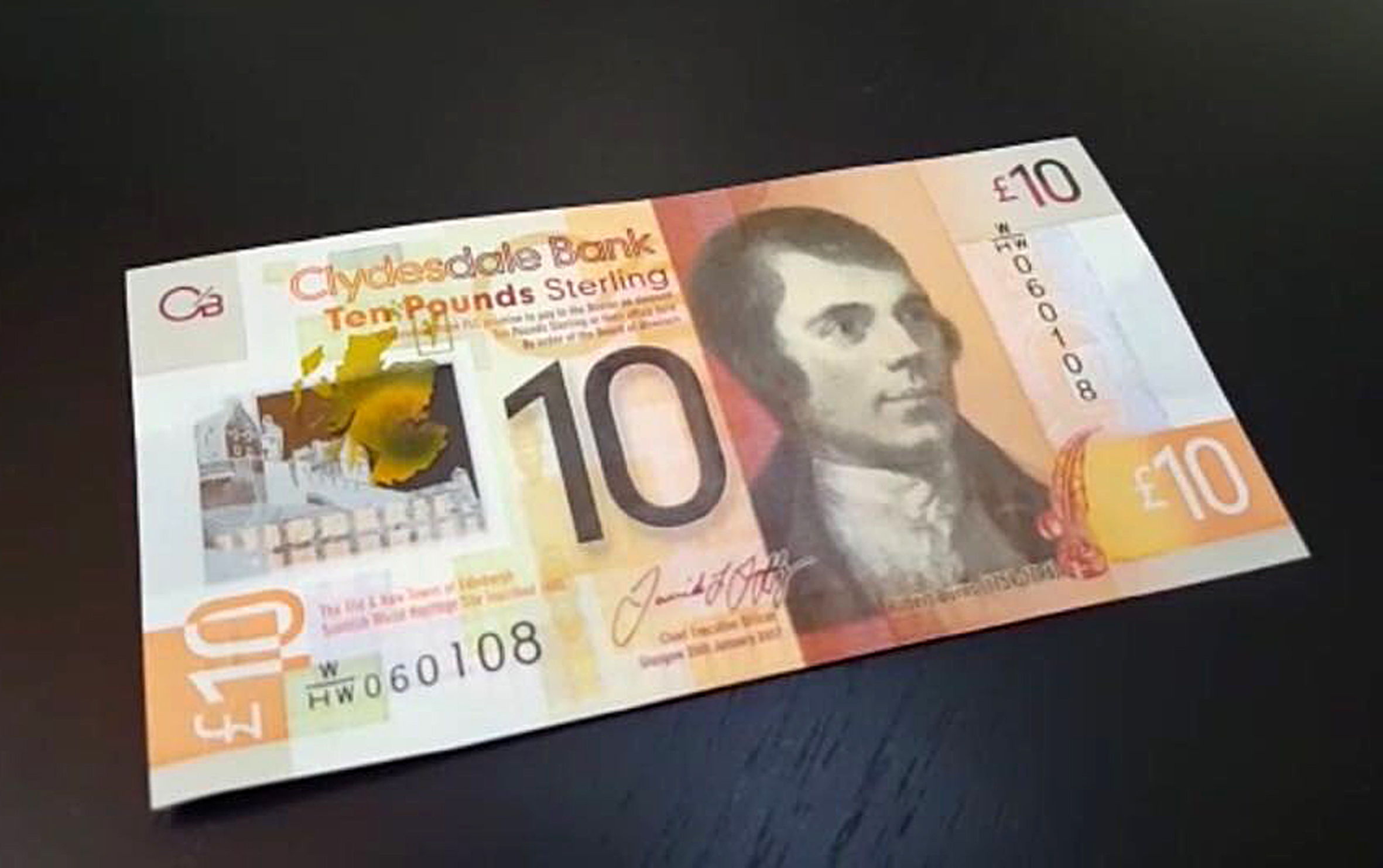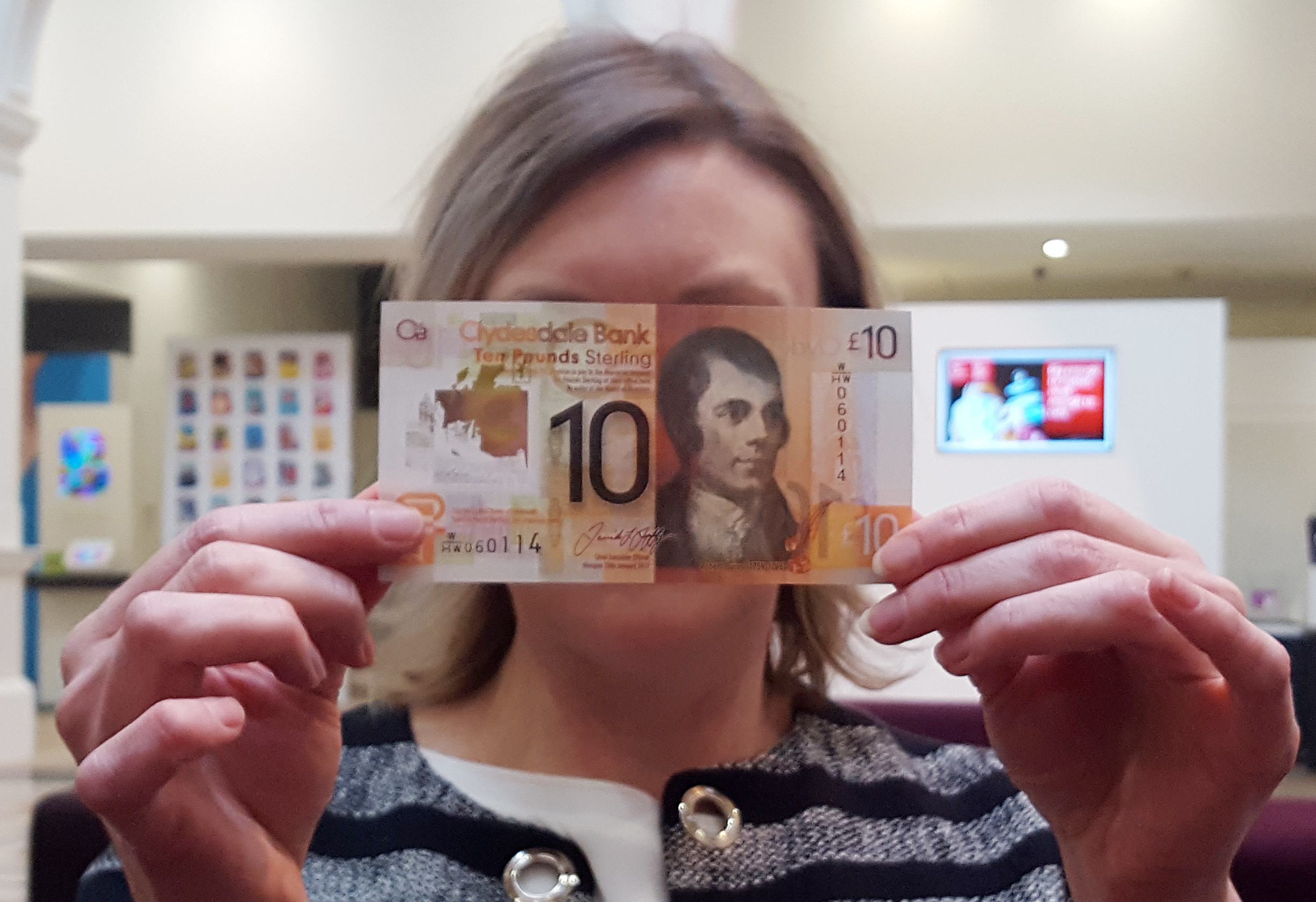
CLYDESDALE Bank has released its new polymer £10 note into circulation.
It’s the first Scottish plastic tenner to be launched and follows the bank’s new £5 note issued last year.
The bank note is described as the latest implementation of the “evolving technology” surrounding British currency.
The new note is slightly smaller than the previous paper versions and includes new security features, with the outline of Scotland depicted in a “shiny ink” over a transparent window to make it harder to forge.
The image of Robert Burns is on the front, with landscapes of Edinburgh’s Old and New Towns on the reverse.
Like their counterparts down south, released by the Bank of England earlier this month, the note will be more easy to use for blind and partially sighted people.
The notes are already in tiered sizes, and have bold numerals, raised print and different colours to allow easier use by blind and partially sighted people.
The older £10 Clydesdale note will remain in circulation and can still be used for making transactions.
Lorna McMillan, company secretary of Clydesdale and Yorkshire Banking Group, the owner of Clydesdale Bank, said: “More durable and more secure than normal paper notes, the move towards polymer is an important milestone in our history of innovation.”
The polymer notes are water resistant, much less likely to tear, and are said to be more environmentally friendly in production.
Ms McMillan added: “We have been issuing banknotes since 1838 and it’s just as vital as ever to ensure we are creating and developing currency that is fit for modern day use.”
The Royal Bank of Scotland is set to release its first plastic £10 note on October 4, featuring astronomer Mary Somerville on the font.
The Bank of Scotland is also launching their version this autumn.

Enjoy the convenience of having The Sunday Post delivered as a digital ePaper straight to your smartphone, tablet or computer.
Subscribe for only £5.49 a month and enjoy all the benefits of the printed paper as a digital replica.
Subscribe